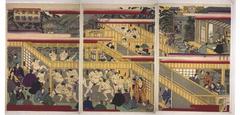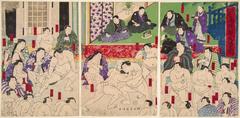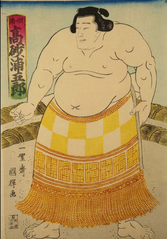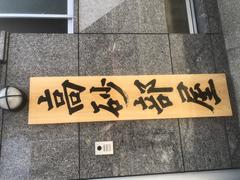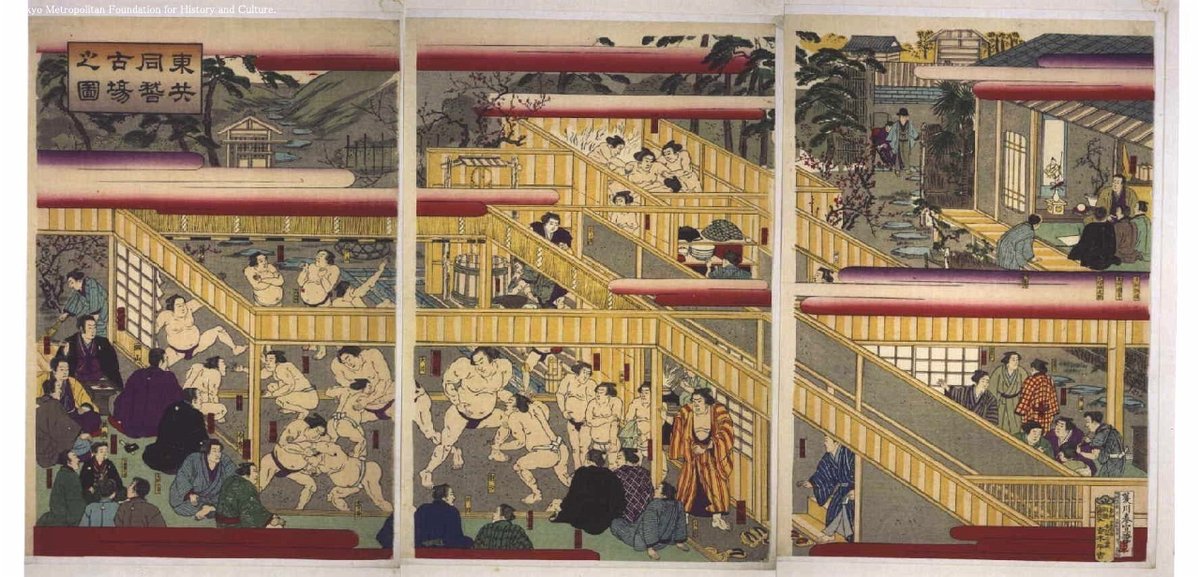
Takasago Stable Tokyo: Visiting Hours, Tickets, and Complete Visitor Guide
Date: 14/06/2025
Introduction: Takasago Stable’s Heritage and Cultural Significance
Takasago Stable (髙砂部屋, Takasago-beya) is one of Tokyo’s oldest and most esteemed sumo stables, renowned for its deep-rooted history and cultural impact within Japan’s national sport. Founded in 1873 by former maegashira Takasago Uragorō and joining the Tokyo Sumo Association in 1878, it has nurtured generations of top-tier wrestlers—including international pioneers such as Konishiki Yasokichi and Takamiyama Daigorō from Hawaii—helping sumo expand beyond Japan’s borders (Wikipedia; Sumowrestling Fandom).
Nestled in the heart of Tokyo’s Ryogoku district, Takasago Stable offers visitors an authentic window into the daily discipline, rituals, and communal life of sumo wrestlers. Morning training sessions, steeped in tradition and hierarchy, are open for respectful observation, making the stable both a living museum and a vibrant hub of contemporary sumo (Travelpander; Tokyoezine).
This guide provides a detailed overview of Takasago Stable’s history, cultural practices, practical visitor information—including visiting hours, ticketing, etiquette—and highlights the best ways to enrich your experience in Tokyo’s sumo heartland.
Table of Contents
- Introduction
- History and Development
- Notable Wrestlers and Achievements
- Sumo Traditions and Daily Life at Takasago
- Visiting Information
- The Stable’s Role in Sumo and Society
- Modern Visitor Engagement
- Nearby Attractions in Ryogoku
- Frequently Asked Questions (FAQ)
- Summary and Recommendations
- Sources
History and Development
Takasago Stable began in 1873, originally established as Takasago Kaisei-Gumi before formally joining the Tokyo Sumo Association in 1878 (Wikipedia; Wikiwand). As a leading member of the influential Takasago ichimon (one of sumo’s five major clans), the stable has helped shape modern sumo and expanded its reach, notably absorbing Oyama stable in 1986 (Sumowrestling Fandom).
Notable Wrestlers and Achievements
Takasago Stable has produced numerous legendary wrestlers, including:
- Konishiki Yasokichi: The first non-Japanese ōzeki, who won three top-division championships (Sumowrestling Fandom).
- Takamiyama Daigorō (Jesse Kuhaulua): The first foreigner to win a top-division yūshō (championship) in 1972 and a prominent stablemaster.
- Asashio Tarō: A prestigious shikona (ring name) passed through generations, inspiring the tradition of wrestlers adopting names starting with 朝 (asa, “morning”).
- Kimura Shōnosuke (33rd): Chief referee (tate-gyōji), symbolizing the stable’s broad influence in the sumo world.
The stable is also recognized for welcoming foreign rikishi from Hawaii and Samoa, fostering sumo’s internationalization (Sumowrestling Fandom).
Sumo Traditions and Daily Life at Takasago
Life at Takasago Stable revolves around rigorous communal training, strict hierarchy, and deep respect for tradition. Wrestlers live and train together under the watchful eye of the stablemaster, with juniors supporting seniors in both practice and daily chores (Asocial Nomad). Morning practice begins as early as 6:00 AM, featuring rituals such as shiko (leg stomps), suriashi (sliding steps), and ceremonial gestures rooted in Shinto beliefs (Travelpander).
Since the mid-1990s, the adoption of shikona beginning with 朝 (asa) honors the legacy of the Asashio stablemasters (Sumowrestling Fandom).
Visiting Information
Location and Access
Takasago Stable is situated in Ryogoku, Tokyo’s sumo district, easily accessed via JR Sobu Line or Toei Oedo Line at Ryogoku Station. The stable is within walking distance from both stations, making it convenient for visitors.
Visiting Hours and Ticketing
- Training Sessions: Morning practices typically start between 6:00 and 7:30 AM and last 1.5 to 2 hours. Schedules may shift based on tournaments or special events.
- Advance Booking: Reservations are mandatory—walk-ins are not permitted. Most visitors join through guided tours, which handle arrangements and provide English commentary (Japansaver; Tokyoezine).
- Tickets: There’s usually no entrance fee for the stable itself, but guided tours may cost ¥3,000–¥5,000 per person, including interpretation and logistics (tokyoezine.com).
- Age Restrictions: Children under 12 are typically not allowed to maintain a respectful environment (tokyoezine.com).
Guided Tours and Etiquette
- Silent Observation: Remain quiet throughout practice; talking, eating, and use of electronic devices are strictly prohibited (japanwelcomesyou.com).
- Dress Appropriately: Wear modest clothing, remove hats and sunglasses, and avoid flashy attire.
- Photography: Usually prohibited during training. Always confirm with your guide or stable staff before taking any photos (tokyoezine.com).
- Arrival: Be punctual; late arrivals may be denied entry to avoid disruption.
- Seating: Expect floor seating on cushions for up to 90 minutes.
Accessibility
- The stable’s traditional layout may be challenging for visitors with mobility impairments. Contact your tour provider in advance to discuss possible accommodations.
Special Events and Photo Opportunities
- Occasionally, the stable hosts public events or allows post-training photos and interactions, but these are strictly regulated. Check with tour operators for special offerings.
The Stable’s Role in Sumo and Society
Takasago Stable is not only a training ground but also a contributor to sumo governance through the Japan Sumo Association. Its openness to foreign wrestlers has made it a symbol of sumo’s evolving, inclusive spirit (Sumowrestling Fandom).
Modern Visitor Engagement
Today, Takasago Stable houses over 20 active wrestlers and regularly welcomes visitors for educational tours and cultural experiences. These initiatives reinforce its reputation as a leading sumo institution and a top destination for those seeking to immerse themselves in Japanese sporting culture (Asocial Nomad; Japansaver).
Nearby Attractions in Ryogoku
Make the most of your visit by exploring Ryogoku’s rich sumo and cultural heritage:
- Ryogoku Kokugikan: Japan’s main sumo arena, hosting major tournaments and the Sumo Museum.
- Sumo Museum: Rotating exhibitions on sumo history and culture.
- Edo-Tokyo Museum: Chronicles the city’s transformation from Edo to modern Tokyo (Edo-Tokyo Museum).
- Chanko Nabe Restaurants: Sample the traditional stew favored by sumo wrestlers at local eateries.
- Sumida Hokusai Museum, Sword Museum, and Kyu-Yasuda Teien Garden: Additional cultural stops in Ryogoku.
Frequently Asked Questions (FAQ)
Q: What are Takasago Stable’s visiting hours?
A: Morning practice starts around 6:00–7:30 AM, lasting up to 2 hours. Confirm the schedule in advance.
Q: How do I get tickets?
A: Reserve in advance through authorized tour providers. Walk-in visits are not accepted.
Q: Are guided tours available in English?
A: Yes, several agencies offer English-language tours with cultural commentary.
Q: Can I take photos during practice?
A: Photography is generally not allowed during training sessions. Always ask your guide for clarification.
Q: Is the stable accessible for people with disabilities?
A: Accessibility is limited due to traditional floor seating; inquire with tour organizers for specific needs.
Q: Are children allowed?
A: Most stables, including Takasago, do not permit visitors under age 12.
Summary and Recommendations
Takasago Stable is a cornerstone of Tokyo’s sumo tradition, blending historic prestige with a modern, inclusive approach. Observing morning practice here is a rare privilege, offering insight into sumo’s hierarchy, discipline, and communal lifestyle. Advance booking, respectful etiquette, and adherence to strict protocols are essential for visitors (Tokyoezine; Japansaver).
Enhance your experience by exploring Ryogoku’s sumo-related attractions, sampling chanko nabe, and immersing yourself in the area’s cultural offerings (Edo-Tokyo Museum; Travelpander). Book tours early, follow all etiquette, and consult official sources or reputable agencies for up-to-date information.
For more guides and updates, download the Audiala mobile app and follow us on social media for exclusive content and travel tips.
Sources
- Wikipedia: Takasago Stable
- Sumowrestling Fandom: Takasago Stable
- Travelpander: How to See Sumo Training in Tokyo
- Tokyoezine: Sumo Morning Practice with English Guide
- Japansaver: Sumo Morning Practice with English Guide
- Japanwelcomesyou: Watch Morning Practice at a Sumo Stable in Tokyo
- Edo-Tokyo Museum Official Site
